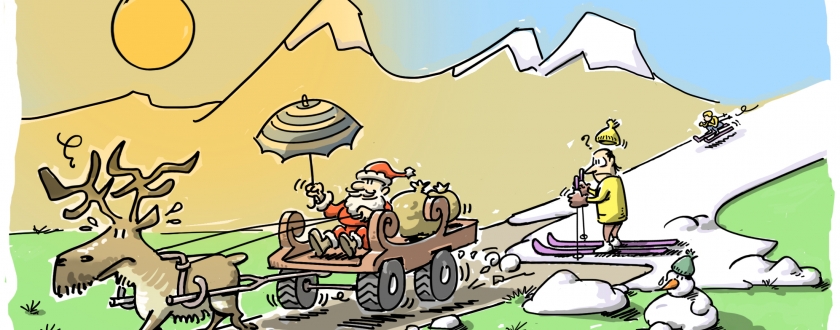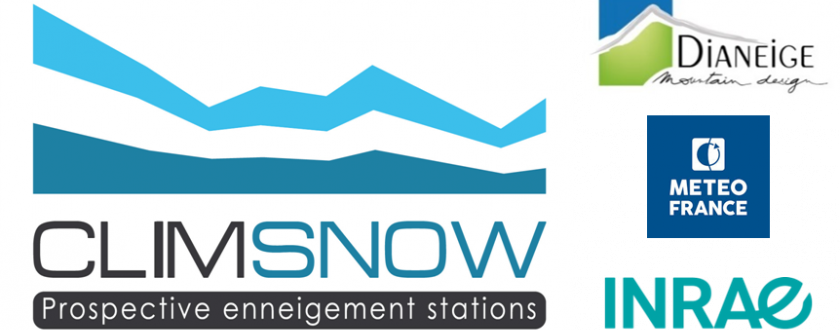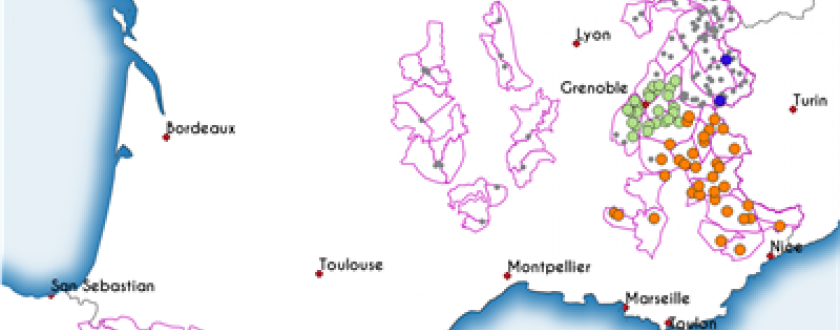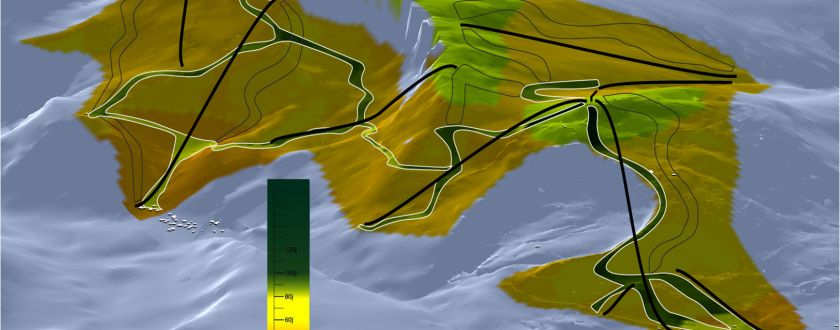CLIMSNOW
Description of the case study
CLIMSNOW is based on a methodology applied by Météo-France and INRAE researchers, and the consultant Dianeige, which allows for the provision of results on winter sport resort snow and meteorological conditions at various times during the 21st century, and analysis of the consequence of these changes for future investments and strategic options. The modelling chain used is based on meteorological observations of the snow and the Météo-France measurement network to provide a historical and current status. Base on this, future evolution is calculated using the climate scenarios used by the IPCC to estimate the meteorological evolution of snow at different times. Thanks to these results, it is possible to take part in orientations regarding tourism strategies and the compositions of coming investment programmes for mountain territories and resorts that must be maintained.
CLIMSNOW uses the latest climate projections available with a statistical alignment and scale reduction method (ADAMONT) that is adapted to French mountain areas. Three greenhouse gas (GHG) emissions scenarios are taken into account: RCP2.6, RCP4.5, and RCP8.5. The latest version of the Crocus-Resort model was used to model the snow, which does not allow for the evolution of the natural snow cover to be modelled, and instead explicitly simulates the effects of snow production and preparation. In addition, the system can now simulate the evolution of meteorological snow variables at local level within a ski area, taking into account the different altitudes, orientations, and slopes.
Mountain areas are not immune to climate change, which has a direct impact on snow cover sustainability. Rigorously measuring values is important in order to extract consequences and adapt tourism centres and regional tourism strategies.
» In the short- and long-term, what will the weight of activities directly related to snow be on the economies of our mountain ranges?
» What directions are there for the development of our tourism products?
» What will the cost of reinforcing snow activities be? In what perimeter?
» How will transition periods be faced?
All of these questions are considered, albeit to different degrees, in all valleys whose economy and social life depend on natural or artificial snow.
Dianeige’s experience lets us go beyond the “neutral” assessment made by researchers to offer recommendations to provide specific aid to project managers in the development of tourism complexes. Thus, translating all the scientific results into clear, understandable language is possible, with very specific analyses on the strategies to follow to adapt to the effects of climate change (types of investment, amortisation time, artificial snow network reinforcement, diversification, and year-round activities, etc.). All of this within a context of environmental respect and local heritage appreciation, values that are at the heart of Dianeige’s planning.
The case was developed, implemented, and partly funded as a climate change adaptation measure.
CLIMSNOW is a consortium in which Météo-France (CNRM Laboratory, Météo- France-CNRS, Snow Studies Centre), the INRAE (LESSEM Laboratory), and Dianeige (a company specialised in the development of mountain resorts) participate.
Additional Information
The team that works on CLIMSNOW studies is comprised of researchers, engineers, and technicians with complementary functions and competencies. Based on the local data collected (topographical information, ski slope location, ski lift routes, snow guns, etc.) and simulations of future snow conditions, the team produces reports to evaluate the effects of climate change on ski resort operating conditions. These results are presented and discussed during meetings and on-site visits with the participation of local authorities and operators.
In recent years, ski resorts have become increasingly aware of the effects of climate change on their viability. For this reason, the CLIMSNOW service has been quite successful. Right now, the limiting factor is this type of service’s cost (some tens of thousands of euros, depending on the size of the complex), which poses an obstacle for complexes with fewer financial resources.
It is difficult to make a cost/benefit comparison of the CLIMSNOW service, however it is easy to imagine that current costs will be recovered in large part thanks to better adaptation of investment plans and tourism offerings.
CLIMSNOW was financed in large part by Météo-France, Inrae, and Dianeige. Various research programmes have contributed to the development of this service over the course of nearly 10 years.
08/01/2018 (in progress)
Reference information
PYRENEAN CLIMATE CHANGE OBSERVATORY
Avenida Nuestra Señora de la Victoria, 8
22.700 - Jaca
Huesca - España
+34 974 36 31 00
info_opcc@ctp.org








